Causes of crane wheels gnawing rail
06 Nov, 2017
Crane wheels gnawing rail has four causes: crane wheels problem; crane rails problem; bridge problem; transmission system problem. Let’s learn about steel crane wheels rail gnawing problems.
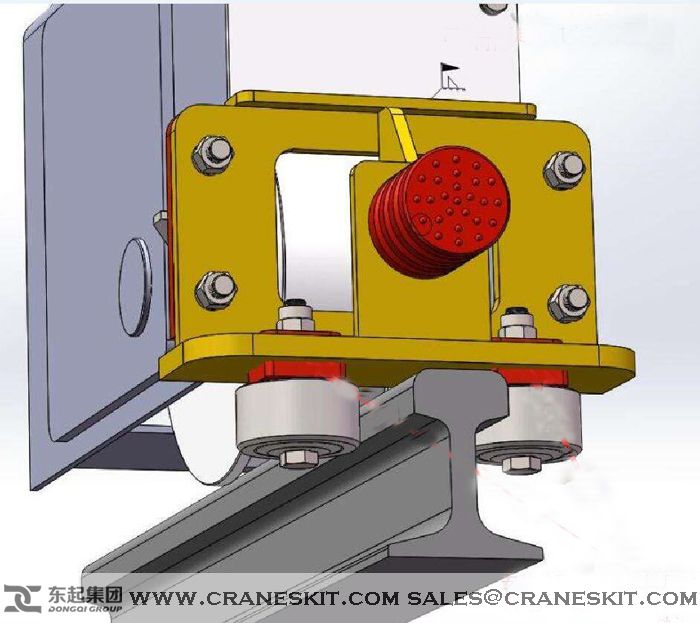
Wheel problem
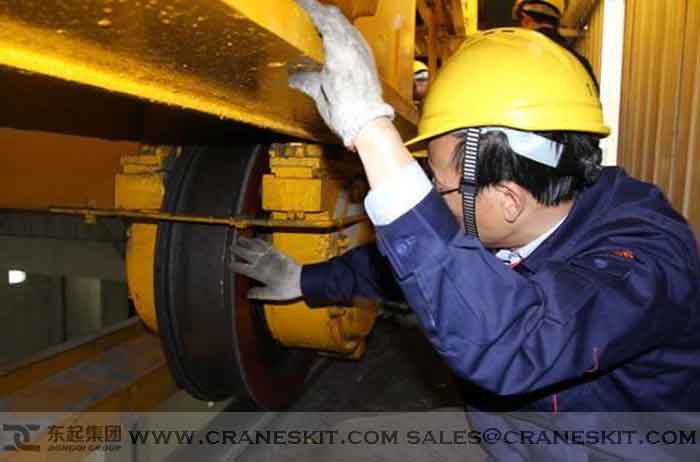
The installation position of the crane wheels is inaccurate
- The crane wheel horizontal deviation is too large. This is one of the common causes of wheel gnawing rail bridge crane. Horizontal deviation is too large, the wheel rolling surface of the center line and the center line of the rail forms an angle crane in one direction driving, one side of the wheel rim on rail; when the lifting machine to the opposite direction when driving the same, a wheel rim and the other side of the rail gnawing, and rail gnawing location is not fixed. The provisions in the wheel installation, horizontal deviation should be no greater than L/1000 (L for measuring length on wheels), and skew direction on the same axis of the wheel should be opposite, otherwise inevitable wheel gnawing rail.
- The vertical deviation of the wheel is too large. That is the center of the wheel end line and the plumb line forms an angle wheel in an inclined state. In this case, the rolling wheel and rail tread contact area decreases, while the pressure per unit area increases, so the wheel rolling surface wear will be uneven, serious, forming ring wear in rolling surface of the wheel groove. The characteristics of this case is the wheel gnawing rail, wheel rim is always on the same side of the rail gnawing, the side of the wheel tilt, and rail gnawing traces slightly lower than the general situation, the crane in the process often fizzed. Provisions in the wheel. The vertical deviation of the wheel should be less than L/400, and the upper part of the wheel should be outward. Errors caused by the vertical wheel rail gnawing refers to the driving wheel, has nothing to do with the passive wheel.
- The wheel tread, the diagonal range, the same track two wheel line bad, can also cause the crane wheel gnawing rail. The characteristics of these cases are rail gnawing on both sides of the wheel flange and rail are worn
Wheel machining error
The wheel in the process, due to the errors caused by the wheel, ranging in diameter is two, if the driving wheel diameter varies, running speed when in use will make the wheels are not the same, after traveling some distance away, cause the body inclined, lateral movement, produce the phenomenon of rail biting for centralized driving mechanism especially.
Rail problem
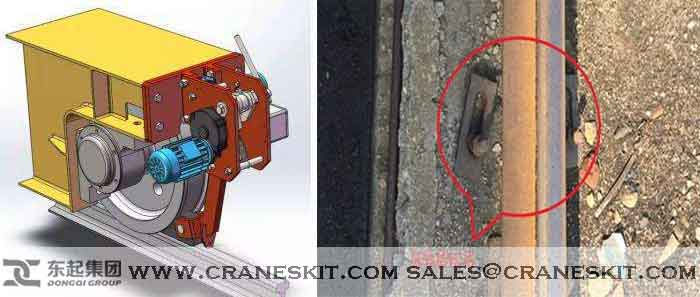
- The two rails relative elevation deviation is too large, due to the two rails relative elevation deviation caused by bridge crane end beam on both sides of the other side of the high side, low. Crane will produce horizontal movement to the low side in the operation process, resulting in skew phenomenon. One side of the rail height, wheel flange and rail lateral squeezing and occurrence of rail gnawing low elevation; side rail, wheel flange and rail squeezing occurs inside the rail gnawing
- The two rails horizontal straightness deviation is too large, in the installation of the track, if the rail straightness deviation, rail straight, horizontal bending caused by rail is too large, when beyond the span of tolerance, will cause the wheel flange and rail side friction, produce skew phenomenon.
- With one side of the rail adjacent the top surface are not in the same horizontal plane. When the crane to run at the rail joint, transverse mobile vehicle will occur, and characteristics of rail gnawing phenomenon. In this case the rail gnawing is often knock metal wheels running to the joints.
- There are oil, water and frost on the top of rail. If there is oil, water and frost on the top of rail, it may cause the wheel to skid when running on the track, leading to the slanting of the car body and gnawing the rail.
Bridge problem
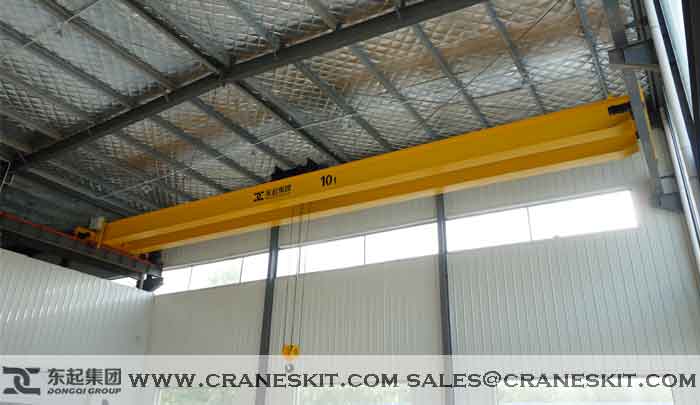
If the bridge deformation, will cause the wheel deflection and crane span changes, so that the end beam horizontal bending, causing horizontal deviation of the wheel, vertical deviation is too bad, causing the wheel gnawing rail.
Transmission system problem
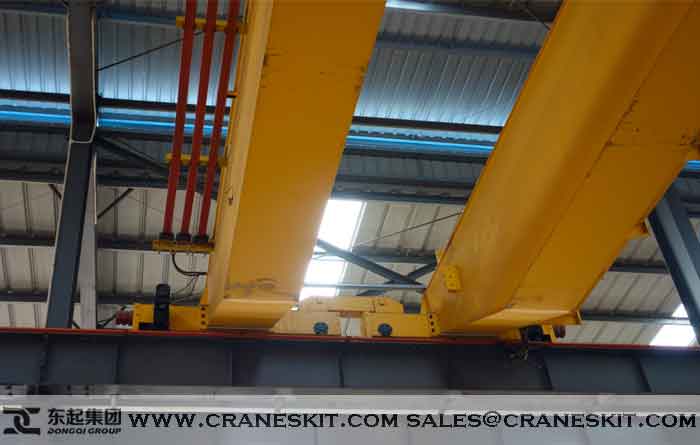
- The gap between the gears transmission system of unequal or shaft key loosening. To respectively drive two sets of gear, when the gear gap is one gear clearance of another set, or a set of drive shaft key loose, will make the two driving wheel speed range, causing the vehicle to walk diagonally occurrence of rail gnawing phenomenon.
- Two sets of brake tightness adjustment driving mechanism are different. At the start and brake, if the brake clearance is large in one side, the brake clearance is small in the other side, can also cause the body to go oblique, occur skew phenomenon.
- The motor speed difference is too large. For the two sets of driving mechanism are respectively driven, because there is no connection between the two sets of institutions, if the two motor speed difference is too large, will cause the crane during operation, side running speed, while the other side is running slow, the body left oblique, occurrence of rail gnawing the phenomenon.
Crane gnawing rails will shorten the service life of the wheel, reducing the service life of the track, damage to the load-bearing structure."Gnawing rail" is a common phenomenon in the use of cranes, therefore, we must make a detailed analysis based on the actual situation and quickly be processed to ensure the normal production, will help reduce and avoid eating rail on the basic equipment, personal belt serious impact.
Related Products




